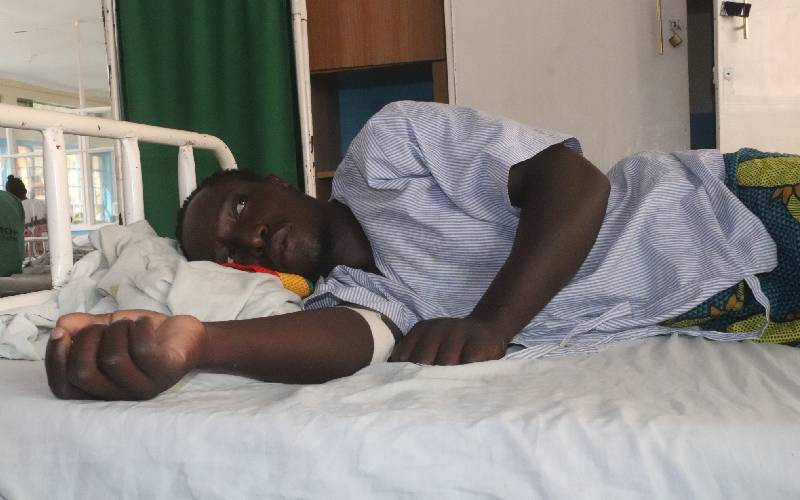UK And Greece Travel Corridor Sees Unusual Aviation Incident As Ryanair Flight From London Collides With Ground Obstacle After Landing In Greek Resort City - Travel And Tour World
Saturday, June 21, 2025

A routine Ryanair flight from the UK to Greece took a dramatic turn when the aircraft, arriving from London Stansted, struck a fixed barrier while taxiing at Kalamata International Airport—causing serious wingtip damage just as summer tourism hits peak levels. The incident, which unfolded during one of the busiest travel weeks between the two countries, has sparked concern over safety procedures at regional airports struggling to cope with soaring seasonal demand. While no injuries were reported and flights continued without major delays, the unexpected collision has raised questions about ground handling infrastructure and operational readiness at Greek holiday gateways increasingly pressured by surging air traffic from the UK.
A Ryanair Boeing 737 MAX aircraft arriving from London suffered visible wingtip damage after making contact with a fixed barrier while taxiing at Kalamata International Airport in southern Greece. The incident, which occurred on Wednesday, June 18, did not result in any injuries or major flight delays but has raised safety questions as peak summer travel surges across Europe.
Normal Descent Ends in Unusual Ground Incident
Flight FR6080 had departed from London Stansted Airport earlier in the day and made an uneventful journey across Europe toward its final destination. The flight experienced moderate turbulence during its descent but landed safely at Kalamata, a regional airport known as a key access point for tourists visiting the Peloponnese peninsula.
Upon landing, the aircraft exited the runway and began taxiing to its assigned stand. It was during this taxi phase — typically one of the least hazardous stages of any commercial flight — that the aircraft’s wingtip clipped a fixed barrier located near the edge of the airport’s taxiing zone. The impact caused clear, visible damage to the outer portion of the aircraft’s wing, though the extent of the structural harm has not yet been disclosed.
No Injuries or Operational Delays
Thankfully, no passengers or crew members were harmed during the incident. Airport officials quickly assessed the situation and cleared the aircraft from the taxiway without triggering major delays or cancellations. According to sources familiar with the situation, subsequent departures and arrivals at Kalamata International Airport proceeded on schedule.
Despite the physical damage to the aircraft, the incident did not appear to disrupt airport operations or other Ryanair flights. The airline has yet to issue a formal public comment on the matter, and it is unclear whether the aircraft was withdrawn from service for inspection and repairs.
Silence from Aviation Authorities
As of this writing, the Hellenic Civil Aviation Authority (HCAA) — the national body responsible for overseeing aviation safety in Greece — has not released a public statement regarding the taxiing incident. No official investigation has been announced, although under standard aviation safety protocols, an internal review is usually carried out by both the airline and the airport’s ground operations team.
Aviation analysts note that while wingtip collisions during taxiing are relatively rare, they do occur, particularly at smaller or older regional airports where maneuvering space is limited and seasonal congestion increases traffic density.
Whether due to human error, miscommunication between the cockpit and ground control, or poor ground infrastructure, the cause of the wing strike will likely be examined internally. Any findings could lead to adjustments in airport signage, taxiing procedures, or aircraft approach paths within the airport premises.
Summer Travel Surge Puts Pressure on Regional Airports
The incident unfolded just as Europe enters one of its busiest travel periods. Kalamata, often overshadowed by more high-profile Greek destinations like Athens, Santorini, or Mykonos, has increasingly become a favored arrival point for international travelers seeking more relaxed, authentic experiences in southern Greece. The airport serves as a key gateway to the Peloponnese — a region rich in history, beaches, and heritage sites.
Ryanair, known as Europe’s largest budget carrier, operates regular services from various UK airports to Greece, including Kalamata. With travel demand reaching pre-pandemic levels, airports across Europe are under significant operational pressure, and even minor mishaps can quickly escalate if not properly managed.
While this particular incident did not cause cascading delays, experts say it serves as a reminder of the risks associated with high-volume seasonal travel, especially at regional airports with limited space and outdated infrastructure.
Aircraft Ground Contact Incidents: A Wider Aviation Concern
Aircraft ground contact incidents, though uncommon, are part of a category of airport safety issues that international aviation bodies like the International Civil Aviation Organization (ICAO) and European Union Aviation Safety Agency (EASA) monitor closely. Wingtip collisions, in particular, are frequently cited in global incident databases as events that usually result from clearance misjudgments, narrow taxi lanes, or inadequate ground guidance — particularly in busy or constrained airfields.
Modern aircraft such as the Boeing 737 MAX are equipped with advanced avionics and sensors, but the responsibility for avoiding ground obstacles still heavily relies on visual guidance, air traffic control instructions, and the pilots’ judgment, particularly when navigating complex or unfamiliar airports.
Industry Watchers Await Response
With no formal statement from Ryanair or the HCAA at the time of publication, questions remain about whether more stringent taxi protocols will be enforced at Kalamata International Airport. Travelers may not notice any changes, but ground staff and pilots could see revised guidance or temporary modifications to the airport’s movement zones.
The damaged aircraft is expected to undergo a full inspection before returning to service. Airlines typically perform rigorous assessments in such cases to ensure no internal structural compromise has occurred, particularly to the wing’s aerodynamic integrity or fuel systems.
A Ryanair flight from the UK to Greece suffered serious wing damage after striking a barrier while taxiing at Kalamata Airport, raising safety concerns amid surging summer holiday traffic. The incident highlights growing pressure on regional Greek airports handling high volumes of UK tourists.
For now, the incident appears to be isolated, but it has sparked discussions among aviation safety experts and frequent travelers alike, especially given the rising pressures on Europe’s aviation sector during the peak holiday period.









